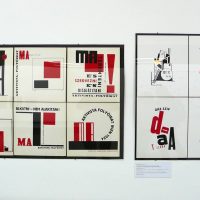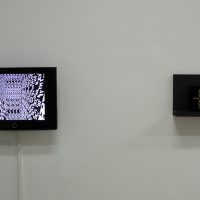A utopian approach to design first appeared in the modernist movements, questioning the ornamental function of design and lining it up for social and political goals. The sixties and seventies saw the appearance of anti-design; as a means of expressing a critical attitude, more and more artists turned to deliberately amateur DIY solutions.
Today, the design elements that were created originally out of political and social commitment have become freely interchangeable stylistic elements, devices of marketing, making the political decoding and conscious use of the diverse visual languages necessary for the critical approach.
The exhibition presents the historical and contemporary projects and publications from the boundary of design and the visual arts in three groups: Typographical utopias, Parallel design, Subversive design.
Typographic Utopias
The belief that design and typography can have a political potential to shape society historically appeared within the constructivist movement. At the same time the approach of typography as a world-constructing system can also be discerned in neo-avantgarde and contemporary practices. In this section we present historical documents and contemporary projects that deal with the heritage and reception of modernist design and typography.


